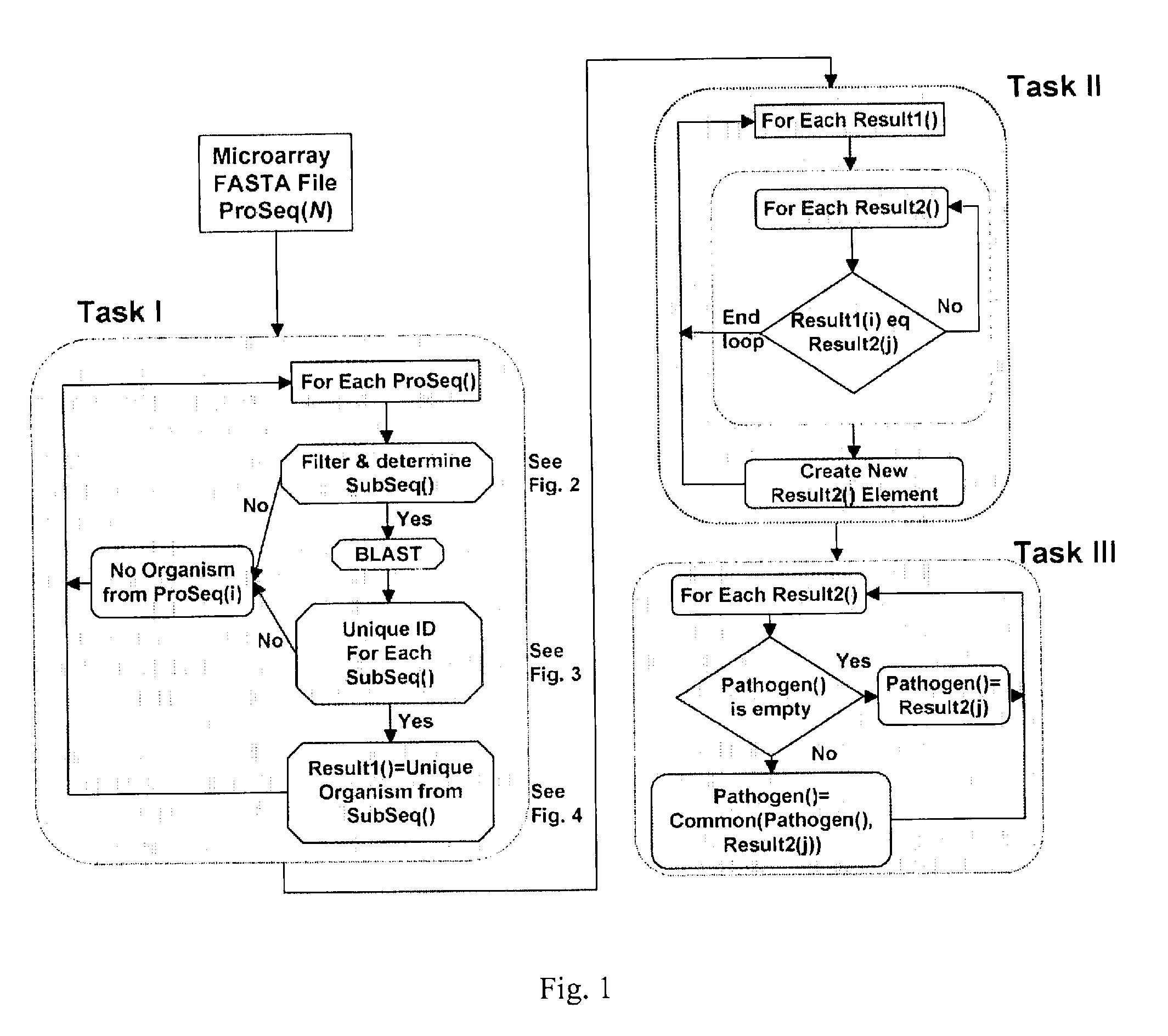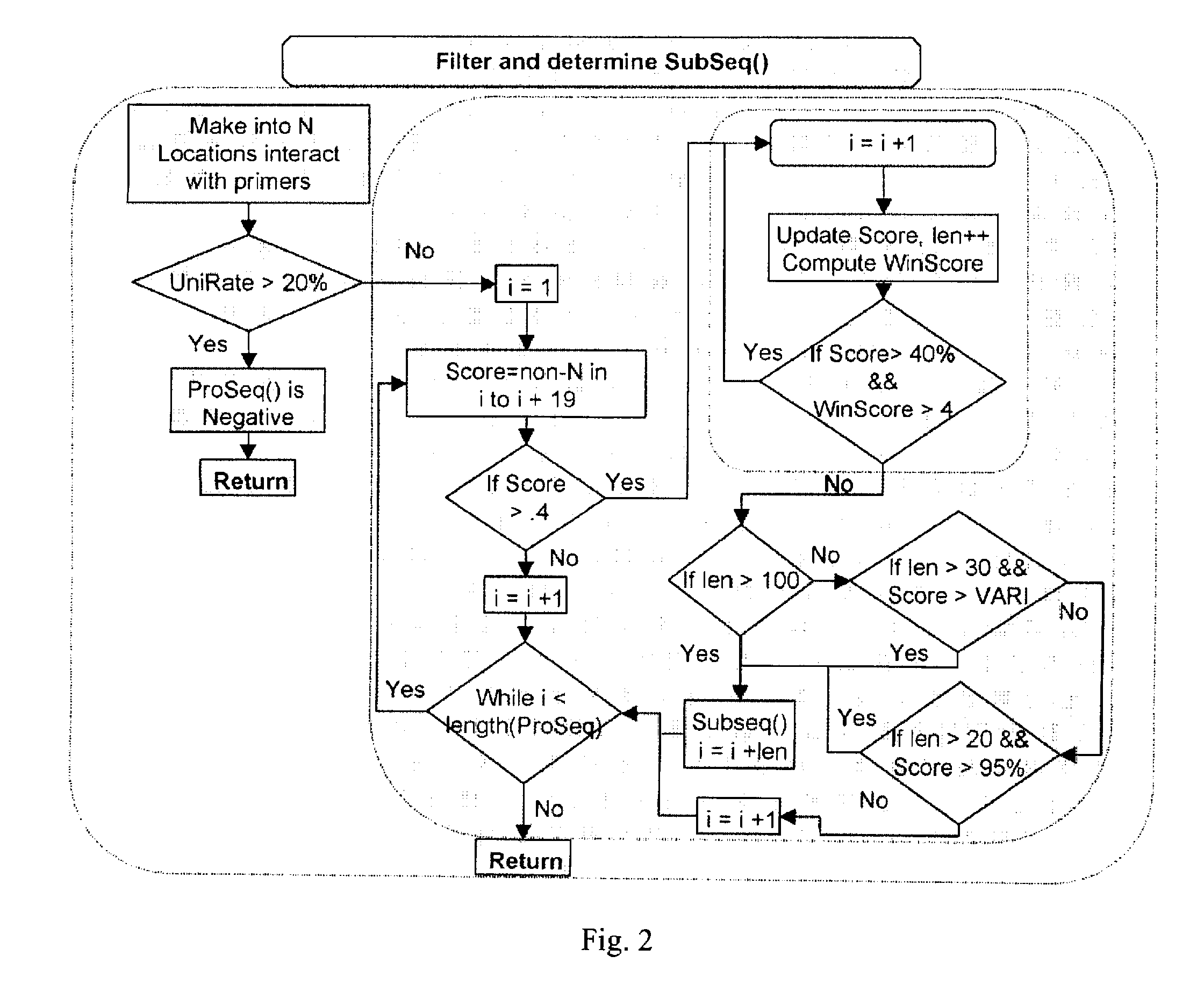Computer-implemented biological sequence identifier system and method
a biological sequence and computer-implemented technology, applied in the field of biological sequence processing, can solve the problems of high mutation rate, inability to detect the presence of new significant mutations, and inability to resolve the details of base sequences in real time, and achieve the effect of optimizing sensitivity and maximizing sensitivity
- Summary
- Abstract
- Description
- Claims
- Application Information
AI Technical Summary
Problems solved by technology
Method used
Image
Examples
Embodiment Construction
[0014] In the following description, for purposes of explanation and not limitation, specific details are set forth in order to provide a thorough understanding of the present invention. However, it will be apparent to one skilled in the art that the present invention may be practiced in other embodiments that depart from these specific details. In other instances, detailed descriptions of well-known methods and devices are omitted so as to not obscure the description of the present invention with unnecessary detail.
[0015] As used herein, the term “sequence” refers to a nucleic acid sequence, such as DNA or RNA, or a protein sequence. As used herein, “base” and “base call” can refer to either nucleotide bases or amino acids. As used herein the term “taxonomic” can refer to any level or class of identification of a pathogen, including but not limited to, genus, species, strain, and substrain. As used herein the term “reporting” can include transmitting a signal from one system to an...
PUM
| Property | Measurement | Unit |
|---|---|---|
| score ratio threshold | aaaaa | aaaaa |
| SNP threshold | aaaaa | aaaaa |
| unique-base threshold | aaaaa | aaaaa |
Abstract
Description
Claims
Application Information
 Login to View More
Login to View More - R&D
- Intellectual Property
- Life Sciences
- Materials
- Tech Scout
- Unparalleled Data Quality
- Higher Quality Content
- 60% Fewer Hallucinations
Browse by: Latest US Patents, China's latest patents, Technical Efficacy Thesaurus, Application Domain, Technology Topic, Popular Technical Reports.
© 2025 PatSnap. All rights reserved.Legal|Privacy policy|Modern Slavery Act Transparency Statement|Sitemap|About US| Contact US: help@patsnap.com



